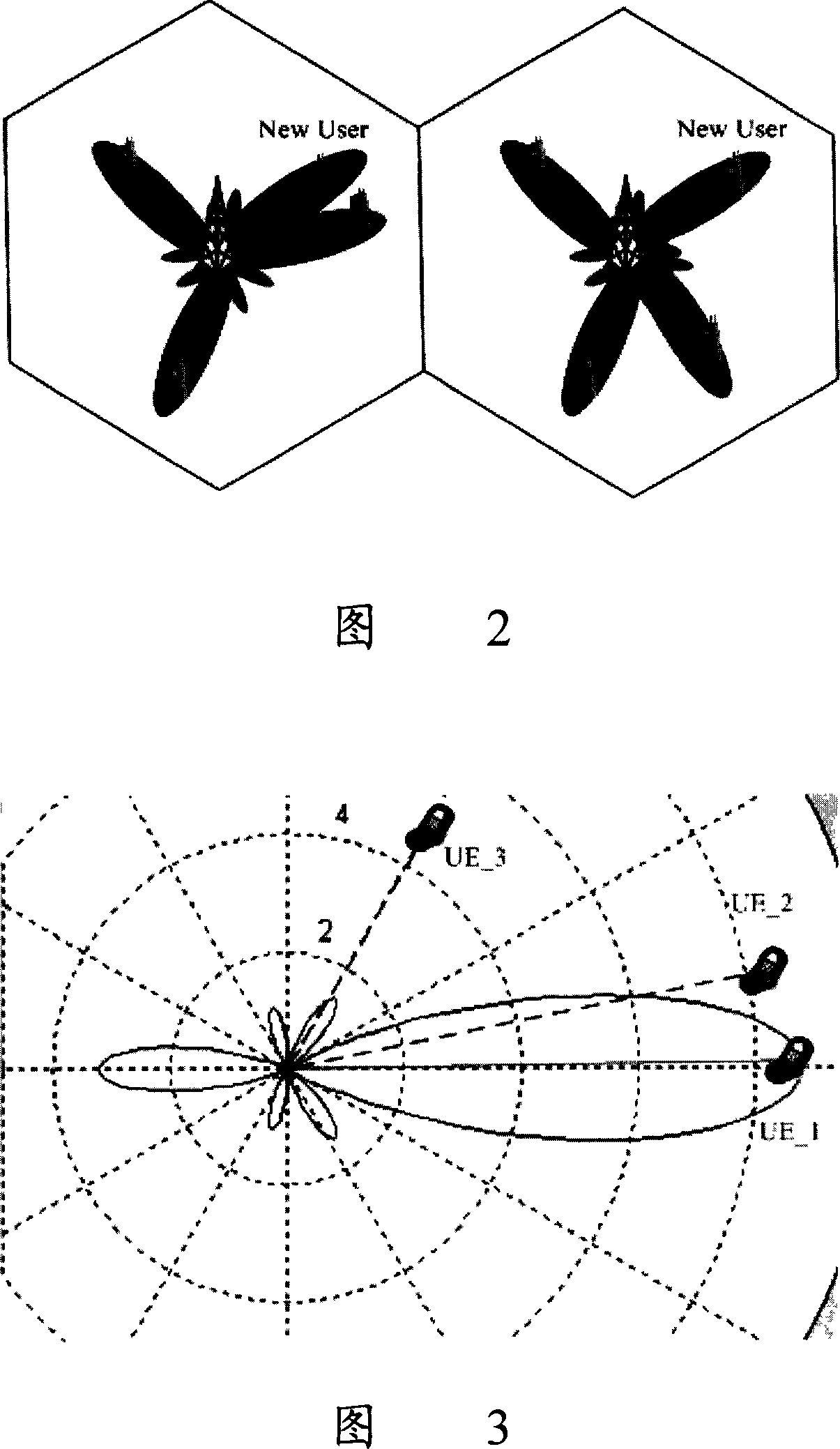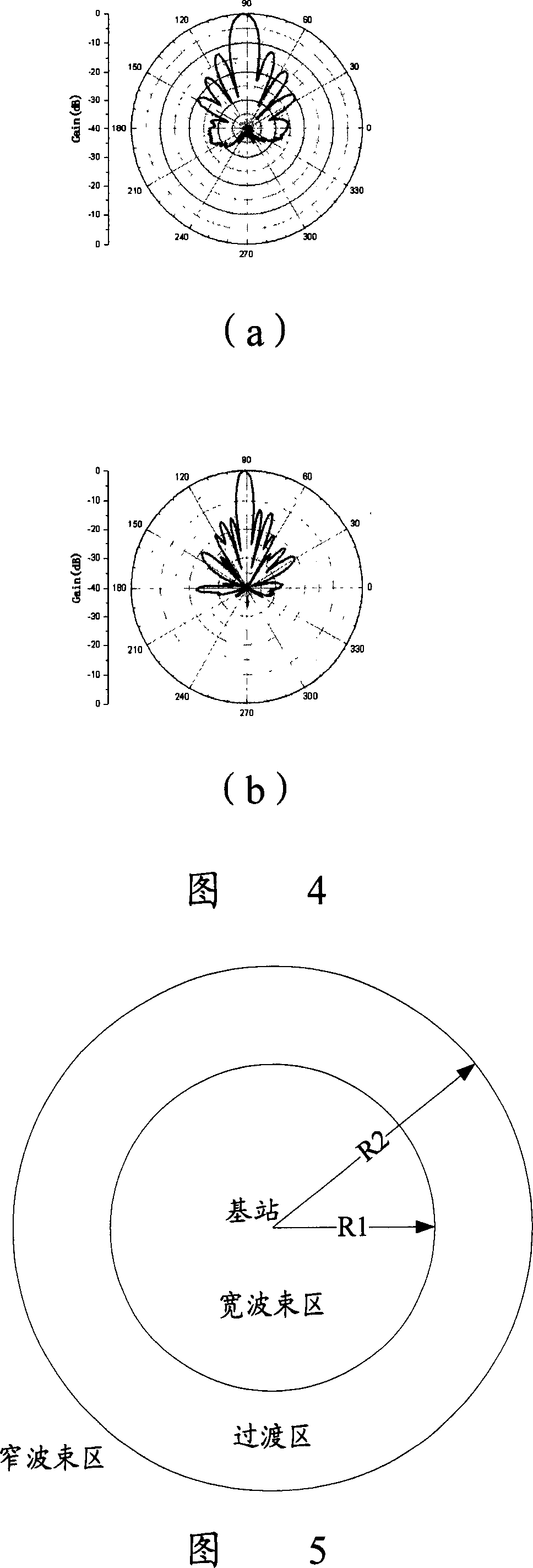Method for adaptively regulating intelligent antenna wave beam width
An adaptive adjustment and beamwidth technology, applied in antennas, diversity/multi-antenna systems, electrical components, etc., to solve problems such as dropped calls and the inability of smart antenna beams to be aligned.
- Summary
- Abstract
- Description
- Claims
- Application Information
AI Technical Summary
Problems solved by technology
Method used
Image
Examples
Embodiment Construction
[0038] In order to make the object, technical solution and advantages of the invention clearer, the present invention will be further described in detail below with reference to the accompanying drawings and examples.
[0039] In order to solve the problem that the downlink beam cannot track the user when the UE moves at a high angular frequency, it is expected that the base station can adaptively adjust the downlink beamwidth of the smart antenna according to the angular frequency ω of the UE relative to the base station. When the frequency ω is large, the downlink beam with a wider width is used to send data, and when the angular frequency ω at which the UE moves is smaller, the downlink beam with a narrower width is used to send data. Therefore, the method of the present invention mainly comprises the following steps:
[0040] A. Set more than one downlink beamwidth for the smart antenna of the base station;
[0041] The multiple downlink beamwidths set in this step can be...
PUM
 Login to View More
Login to View More Abstract
Description
Claims
Application Information
 Login to View More
Login to View More - R&D
- Intellectual Property
- Life Sciences
- Materials
- Tech Scout
- Unparalleled Data Quality
- Higher Quality Content
- 60% Fewer Hallucinations
Browse by: Latest US Patents, China's latest patents, Technical Efficacy Thesaurus, Application Domain, Technology Topic, Popular Technical Reports.
© 2025 PatSnap. All rights reserved.Legal|Privacy policy|Modern Slavery Act Transparency Statement|Sitemap|About US| Contact US: help@patsnap.com



